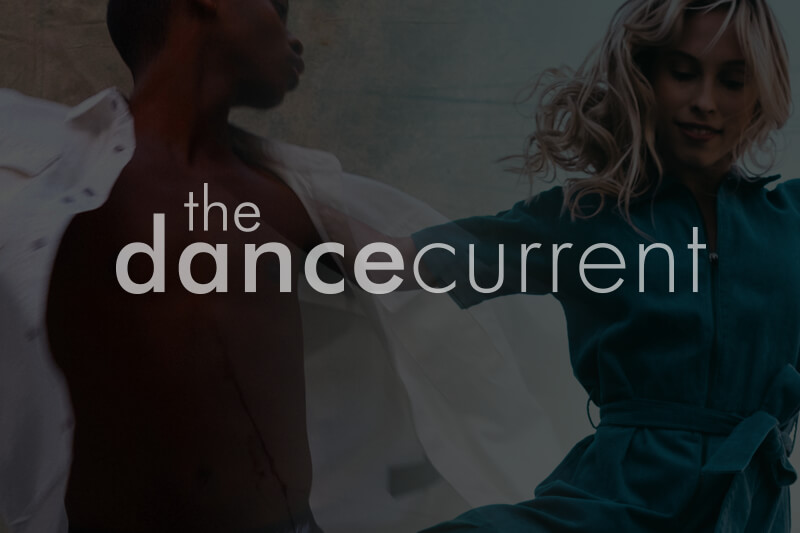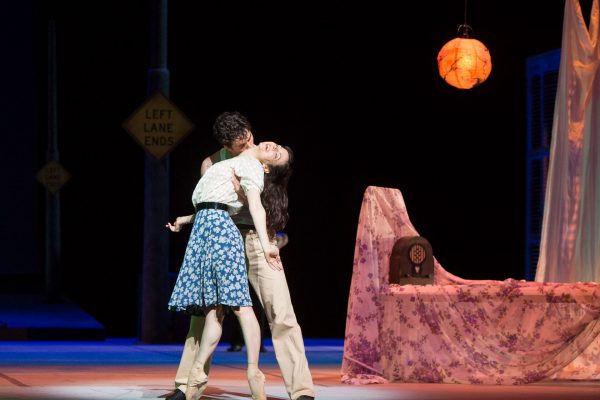For those not watchful of events at Ottawa’s Le Groupe Dance Lab, the July 31st announcement that it would be closing its doors forever came as a stunning shock.
For more than twenty years – ever since Artistic Director Peter Boneham reinvented his performing company, Le Groupe de la Place Royale, to become a centre for contemporary dance research, experimentation and development – the Lab had been a vital incubator of dance creativity in Canada and beyond. In the late 1980s, as he surveyed the Canadian dance scene, Boneham detected a crucial need for choreographers to explore and hone their craft in a supportive environment, free of the distracting pressure to produce a finished work.
Le Groupe – with rented headquarters at Arts Court in Ottawa’s Sandy Hill district – offered visiting choreographers a resident corps of dancers, technical, design and production support and, most importantly, the outside eye of an experienced mentor, or “monitor”. There were also public showings during which choreographers could engage audiences in constructive conversation – feedback sessions intended to help decipher the sometimes problematic gap between artistic intent and how it is perceived.
In 1988 Boneham’s idea was not entirely novel. Dance workshops and choreographic intensives had been around for years, mostly operating in compressed timeframes, simultaneously involving several choreographers and often without the benefit of monitorial oversight. What was unique and visionary about Boneham’s project was the creation of a permanent, integrated institution where choreographers could be individually nurtured over the course of several weeks in what came to be known as a “process”.
Boneham’s initial assessment of the situation proved accurate and his solution successful. “Peter was definitely ahead of his time,” says Yvonne Coutts, an Ottawa-based dancer, teacher and choreographer whose association with Le Groupe began when it was still a performing company.
Le Groupe Dance Lab became a seemingly indispensable resource, not only for emerging choreographers but for those more seasoned, such as former artistic director of Winnipeg’s Contemporary Dancers Tedd Robinson, seeking creative revitalization.
“I had a great job,” says Robinson, “but nobody was telling me the things I needed to hear. Peter, on the other hand, does not hold back. He told me I had an innate theatrical sense but that my vocabulary sucked. He made a lot of sense.”
It was not only choreographers who benefited. Although their schedule was onerous, Le Groupe’s dancers had two invaluable benefits. They took daily class with a tough but inspirational teacher – Boneham himself – and worked creatively with a wide range of choreographers. For dancers who were often in the developmental phase of their careers it was an extraordinary experience – a crash course in endurance and versatility – and if they felt a strong urge to choreograph there was also the possibility of undertaking a “process”.
As a senior officer at one of our major public granting agencies recently remarked: “It’s rare in contemporary dance to open an applicant’s file nowadays and not find a connection to Le Groupe somewhere along the way.”
Even last fall, when Le Groupe was in the midst of a serious financial crisis and trying to adjust to new leadership, the work in the studio continued at its usual intensity with visiting choreographers from Canada, France and The Netherlands.
So why did it all unravel?
That July 31st announcement included a prepared statement from Le Groupe’s long-serving – and, one suspects, long-suffering – board chair, University of Ottawa law professor John Manwaring. “Many factors, financial and otherwise, have led to this extremely difficult decision,” Manwaring stated. “It is always difficult to move from a founder-led organization to one with new artistic leadership and while Le Groupe Dance Lab tried determinedly to do this, in the end the transition proved too difficult.”
The choice of words “too difficult” is telling. One might have expected something more emphatic, such as “impossible”. “Too difficult” suggests that perhaps, in other circumstances, there might have been a solution. And, since this was a decision made by Le Groupe’s legal trustees, its board of directors, it also hints at the understandable exhaustion – even exasperation – of those four public-spirited volunteers who had, for so many years, done their best to keep the company afloat.
Few would argue Professor Manwaring’s contention that moving beyond a founder-led organization is difficult. Canadian dance history is littered with examples, from the Royal Winnipeg Ballet in the early 1950s to Toronto Dance Theatre thirty years later.
Choreographer-driven companies present particularly intractable problems since they are essentially founded to serve as platforms for a specific creative vision. When that creative vision appears to dim or loses the confidence of audiences – or the peer-assessment juries that decide who gets public funding – there is no clear way forward. It is no secret, for example, that the Anna Wyman Dance Theatre, Desrosiers Dance Theatre and Danny Grossman Dance Company – albeit in the latter case specifically in its form as a performing organization – suffered the painful death of slow, progressive cuts.
Although it was not strictly a single choreographer-founded company, a similar fate might have overtaken Le Groupe de la Place Royale had it not successfully convinced the funding agencies to support its refashioned mandate – one not only designed to serve the needs of the dance community but tailor-made for a then fifty-four-year-old director/choreographer seeking to redefine his role as a contributing artist.
Peter Boneham was part of Le Groupe de la Place Royale from the start. Its roots lie in the heady cultural milieu of early 1960s Montréal. Québécoise artists Jeanne Renaud and Françoise Riopelle, with a shared aesthetic forged by their youthful involvement with the modernist automatistes, launched Le Groupe de Danse Moderne de Montréal. Vincent Warren, then a principal dancer with Les Grands Ballets Canadiens, was intrigued by the fledgling troupe’s intellectually rigorous avant-garde experimentation and introduced fellow Grands Ballets member Peter Boneham to Renaud and Riopelle.
Boneham and Warren, both ballet-trained Americans, had become friends in New York City before either joined Les Grands Ballets. Boneham agreed to dance with Renaud in a piece called “Rideau” at Montréal’s Expressions 65. The two quickly became artistic compadres in launching Le Groupe de la Place Royale. Dance was intentionally excluded from the title because of its founders’ cross-disciplinary, collaborative intentions. Although Winnipeg’s Contemporary Dancers proudly claims its status as Canada’s oldest modern dance company, in 1966 Le Groupe was the first to receive a Canada Council grant.
Renaud was gone within five years but Le Groupe continued under the direction of Boneham and company charter member Jean-Pierre Perreault. Perreault, thirteen years younger than Boneham, began as a dancer, learning as he went along, and by 1972 had begun to choreograph. Le Groupe became known for its boldly innovative approach to dance making, particularly the use of mixed media and new technology.
By the mid-1970s, however, Boneham and Perreault had grown restive. Le Groupe was struggling financially and it seemed that the Québec government was favouring the rival Groupe Nouvelle Aire. Boneham – an English speaker with less than functional French – thought it was time to get out. Initially he proposed moving the company to Toronto because it seemed to be “a happening place”. Perreault demurred. Finally, having sounded out the Canada Council, they agreed on Ottawa. Le Groupe moved its company and school there in 1977.
Perreault, meanwhile, was becoming a choreographer of note. It gradually became clear that his ambitions could not be accommodated in Ottawa or within the company. “Le Groupe didn’t suit his artistic needs,” says Boneham. Perreault formally resigned as co-artistic director in 1981. Dancer and choreographer Michael Montanaro, now chair of the contemporary dance department at Montréal’s Concordia University, served as Boneham’s associate director until 1985.
Le Groupe’s switch from being a touring performance troupe to a stay-put centre for creative development was not an overnight event but was formalized in 1988 with a new name and a new mandate. Whether one regards this as a completely fresh start or an evolution of Le Groupe de la Place Royale, Peter Boneham’s claims as a founding father are unassailable.
The issue then becomes how long the founder can continue to function and what happens when he can not. Although the fire in his belly was never dampened, Boneham’s health was sometimes a concern. And since Le Groupe was not dependent on Boneham to supply it with choreography, it could, as an institution with a clear mandate, reasonably look forward to surviving him – even if the mandate might require some fine tuning for the organization to remain useful and relevant.
Conversations about Le Groupe’s future, both within and without, had begun even in the 1990s. Robinson recalls Boneham asking him if he was interested in taking over at some point. Robinson, who had been Le Groupe’s resident guest artist after leaving Winnipeg in 1990, valued the organization highly and got on well with Boneham but was only interested in the mentoring part of the job. “I can teach if I have to,” says Robinson, “but I don’t enjoy it. It’s not my forte at all.” He identifies an important issue. Boneham was teacher, monitor and artistic director. Under the best conditions it would not be easy to find one person to fill all those roles.
The issue of transition came into clearer focus when the funding bodies Le Groupe depended on for almost ninety per cent of its income (in later years the annual budget was around $400,000) suggested it was time to act decisively.
The premature death of Jean-Pierre Perreault in December 2002 seems to have been a catalyst. Though long separated as colleagues, Boneham and Perreault still had a strong emotional bond. Those close to Boneham witnessed the profound impact of Perreault’s death. “It was devastating for Peter,” recalls Coutts.
Coutts, with as clear a knowledge as any of Le Groupe’s workings because of her former involvement as a dancer and choreographer, offered to help. Coutts could teach, she could monitor; she could even write grant applications. She saw Boneham’s acceptance of her offer as a sign that he acknowledged a need for a planned transition of leadership, but while it occupied his thoughts its exact form was not always clearly expressed.
Hiring extra help, of course, takes money and Le Groupe never had much of it. Cash-flow crunches were a cyclical occurrence that the organization somehow always managed to survive. Adding to the regular payroll would take special funding; and it was forthcoming, thanks to the Metcalf and Ontario Trillium Foundations, but it was specifically tied to implementing a transition of leadership.
Boneham, whose twin passions remain teaching and mentoring, certainly embraced the notion of a diminished role for himself but almost certainly never imagined withdrawing completely. The answer, as he saw it, was team leadership. Tony Chong now enters the story.
Originally from Vancouver, Chong moved as a young dancer to Montréal in 1984. There he became immersed in its vibrant dance scene. Chong performed with, among others, Compagnie Marie Chouinard, Carbon 14, José Navas’s Compagnie Flak and Perreault’s company. He danced in Germany’s Steptext Dance Project and with Belgium’s Ballets C. de la B.
Chong first connected with Le Groupe in 2003 as a visiting choreographer. Boneham was impressed. By late 2004 he’d convinced Chong to join Le Groupe as associate director, working alongside Coutts. “I’m not sure why I was specifically asked,” Chong reflects. “We had a shared idealism but maybe it was because I didn’t have an historical connection and came with a different aesthetic.”
Coutts was completely unprepared for Chong’s arrival in January, 2005. “It caught me quite off guard,” she explains; and probably left her feeling slighted. “I had committed a lot to Le Groupe. I’d developed the skill set to be artistic director.”
From Boneham’s viewpoint, the combination of Coutts and Chong was ideal. “Each had strengths and weaknesses and they kind of balanced out. I never saw Tony as artistic director on his own. He still wanted to be a choreographer.”
The team leadership concept, even if it could have been financed over the long term, was ill-fated. It was a sometimes tense ménage à trois that ended abruptly and unpleasantly in the winter of 2006. Coutts decided to bring in choreographer Ame Henderson, along with her own dramaturge/monitor.
Coutts says she felt Le Groupe needed to find new ways to meet the needs of the dance community, part of which involved bringing in “a different kind of outside eye”. Although for many choreographers a major attraction of Le Groupe was the opportunity to work with Boneham, other visiting choreographers had requested their own chosen monitor. According to Chong, Boneham was open to the need for the organization to evolve. “He knew it would need to change,” says Chong, “but Peter was also concerned about his legacy and his ideals.” For him, process and experimentation were the essence of Le Groupe, whereas visiting choreographers sometimes came to view a residency as a chance to produce a finished work. “At times it was almost becoming a production company,” observes Robinson. “That was not what Peter wanted.”
Henderson’s residency brought things to a head for Coutts. Henderson was inadvertently caught in a fomenting cauldron of conflicting ideas about how Le Groupe should function. “It was three weeks of hell trying to support her. I couldn’t understand what was going on. All I could see was this tightening of the grip.” Coutts decided the situation had become intolerable and quit- leaving Chong as sole heir apparent.
And so Chong’s apprenticeship continued until, on April 29th, 2008, Le Groupe’s board announced the passing of the torch with Chong’s official appointment as artistic director, effective July 1st.
Boneham – who by then had been honored with a Governor General’s Performing Arts Award for lifetime artistic achievement in 2005 and appointed a Member of the Order of Canada in April 2008 – would assume the position of senior artistic advisor. It was at this point that a concatenation of events, so intricately entwined that it’s hard to follow the threads, conspired to bring Le Groupe down.~
Read the rest of the story in “The End of an Era, Part 2” by Michael Crabb, posted in November 2009 here.
Tagged: Choreography, Contemporary, National , ON , Ottawa




